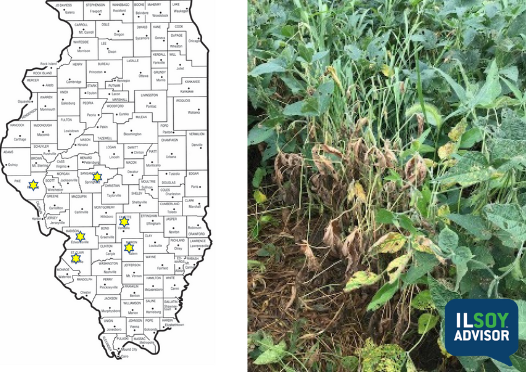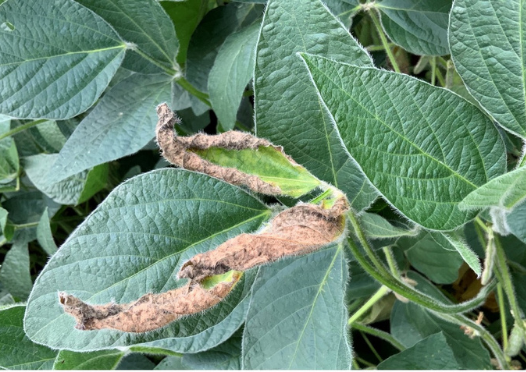ILSOYADVISOR POST
Fungicide Resistance Happens
Frogeye leaf spot fungicide resistance exists in soybeans, but not in a distant cousin, gray leaf spot in corn.
We have learned the hard way about herbicide resistance—just think about the waterhemp and Palmer amaranth plague sweeping across the state. But what about fungicide resistance? Fungicide resistance happens when pathogen populations become less sensitive to a fungicide. As with most agronomics, fungicide resistance can be a gray area because fungi may not become completely resistant to a fungicide, but instead develop reduced fungicide sensitivity.
Fungicide-resistant strains can pop up due to natural mutations. Subsequent fungicide applications, in effect, select for those mutants and build up their population. The population of sensitive strains that we once could kill with a fungicide begins to diminish while the resistant strains flourish. Once you get a high population of resistant mutant fungi in your field, fungicides won’t be as effective.
Here is a review of the pathogen and fungicide factors that affect development of fungicide resistance:

It used to be rare for fungicide resistance to occur in soybean and corn production, because at one time these crops were less intensively managed compared to other specialty crops or landscape plants. In some years, fungicides weren’t applied or only one fungicide application was made during a single corn or soybean season. However, as we strive for greater yields and return on investment and depending on the year, fungicide use has become more commonplace.
The truth of the matter is that fungicide resistance can occur in these pathogens that infect soybeans and corn. The widespread resistance of frogeye leafspot (Cercospora sojina) to Qol fungicides has pathologists very concerned. Qol or “quinone outside inhibitor” is one of two primary fungicide classes used in field crops as foliar fungicides and includes the popular strobilurin family of fungicides.
So, why are we experiencing fungicide resistance in soybeans with frogeye leafspot and yet not in its distant cousin in corn, gray leaf spot (Cercospora zeae-maydis)?
As the names indicate, both frogeye leafspot and gray leaf spot pathogens are the same genus, but are different species. There are many similarities when it comes to scouting for these two diseases just before corn tassel or soybean beginning pod (R3). Both like warm and wet weather. However, one of the main differences when it comes to fungicide resistance is that the frogeye leaf spot fungus can reproduce sexually. This, in turn, can lead to a high level of genetic diversity. In addition, if conditions are favorable, this pathogen can produce a high number of spores with a short generation time. Sexual reproduction with a lot of spore production increases the likelihood of a mutation occurring and becoming a predominant race in a population.

Image courtesy of Tamara Jackson, University of Nebraska.
What can you do? Even though fungicide resistance can be difficult to prevent, certain management practices help to retain and extend the efficacy of fungicides. First, choose a seed variety with a higher frogeye leafspot disease score to provide a higher level of resistance to this disease. Then be sure to apply products that consist of different fungicide classes or rotate fungicides classes if more than one application is made during the same season. Always follow label recommendations and use the proper nozzles or spray volumes to ensure adequate coverage. Finally, you can scout and only use a fungicide if needed based on frogeye leafspot presence and disease risk.
For more information: http://www.plantmanagementnetwork.org/hub/SoyFungicideResistance/files/FungicideResistance.pdf.




Comments
Add new comment